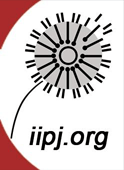Article Title
Indigenous Federation: The Case of Borana Oromo, Ethiopia
Abstract
This article draws attention to the Borana Oromo gadaa system as an Indigenous federation. Gadaa is an Indigenous democratic political system used by the Oromo in which leaders are elected and their term in office is strictly fixed. Data for this research were generated through interviews, observations, and focus group discussions. The findings of this research indicate that the Borana have three gadaa councils at two levels: one at the center for the entire Borana and two named after two Borana clans. The later have relative autonomy under the cardinal law of the Borana gadaa. This structure has been serving as a means of managing conflict, maintaining internal unity, and ensuring better governance and power devolution. Finally, suggestions are made on how to support Indigenous governance systems, which in this case includes acknowledging the values and principles of the gadaa system, as well as designing a legal framework that retains and protects the integrity and legitimacy of the system.
Acknowledgments
I would like to acknowledge several individuals and institutes for they contributed to the success of this work. The Volkswagen Foundation sponsored my PhD study through the project entitled “Traveling Models of Conflict Management.” I was able to generate part of the data for this article during my stay in the field as part of my dissertation. Being sponsored by Jimma University, I was also able to attend the 40th Gumii Gaayoo in the summer 2012. Furthermore, Jimma University sponsored a research project entitled “Borana’s Response to Local and Global Changes: Amending Gadaa Law” in 2013/14, which enabled me to collect enriching data on the issue under discussion. I must express my deepest thanks to the Borana Elders and ritual leaders who assisted me accessing important information on Borana gadaa federation.
Creative Commons License

This work is licensed under a Creative Commons Attribution-Noncommercial-No Derivative Works 4.0 License.
Recommended Citation
Chala, D. G.
(2017).
Indigenous Federation: The Case of Borana Oromo, Ethiopia. The International Indigenous Policy Journal, 8(1)
. Retrieved from: https://ir.lib.uwo.ca/iipj/vol8/iss1/2
DOI: 10.18584/iipj.2017.8.1.2

